We have completed maintenance on Astronomy.com and action may be required on your account. Learn More

- Login/Register
- Solar System
- Exotic Objects
- Upcoming Events
- Deep-Sky Objects
- Observing Basics
- Telescopes and Equipment
- Astrophotography
- Space Exploration
- Human Spaceflight
- Robotic Spaceflight
- The Magazine

40 years after Voyager, scientists push for new missions to Uranus and Neptune
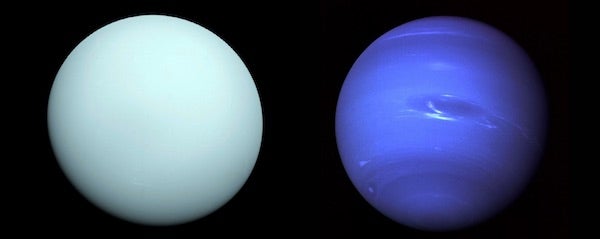
In the 63 years since Sputnik, humanity has only visited Neptune and Uranus once — when Voyager 2 flew past Uranus in January 1986 and Neptune in August 1989 — and even that wasn’t entirely pre-planned. The unmitigated success of Voyager 1 and 2 on their original mission to explore Jupiter and Saturn earned the twin spacecrafts further missions in our solar system and beyond, with Neptune and Uranus acting as the last stops on a Grand Tour of the outer solar system.
In the 31 years since Voyager 2 left the Neptune system in 1989 and began its interstellar mission, more than a dozen proposals have been offered for return missions to one or both ice giants. So far, none have made it past the proposal stage due to lack of substantial scientific interest. Effectively, the planetary research community has been giving the ice giants the cold shoulder.
But recently, exoplanet data began revealing the abundance of icy exoplanets in our galaxy “and new questions about solar system formation are bringing focus back to Uranus and Neptune,” says astronomer Candace Hansen.
And it just so happens to be the perfect time to consider a return trip.
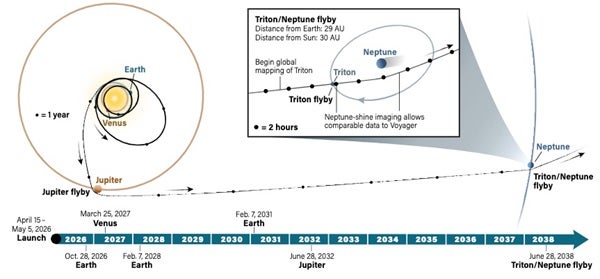
A new mission proposal, named Trident, has been selected as one of four semifinalists for NASA’s Discovery Program. The proposed trajectory of the spacecraft would take advantage of a gravitational “kick” from Jupiter to reach Neptune and its moon, Triton.
Time to return
The decision to aim Voyager 2 at the ice giants was made in 1981, and took advantage of a rare planetary alignment of the outer planets. During its flyby of Jupiter, Voyager 2 received a “kick” from the planet, slingshotting it onto the right path to Uranus and eventually Neptune. A similar gravity assist from Jupiter will be possible between 2029 and 2034.
Voyager 2’s flyby of the ice giants returned a wealth of new knowledge about these frigid behemoths, succeeding beyond everyone’s wildest dreams. The spacecraft discovered new rings and new moons around both planets, found wild winds on Neptune when none were expected, and revealed that Neptune’s moon Triton was truly spectacular, hinting at the possibility of a subsurface ocean that could potentially support microbial life.
Hansen, a member of the Voyager imaging team during the flybys of Uranus and Neptune, recently recalled two of Voyager’s many highlights: “the images of plumes or clouds (we don’t know which) on Triton. And of course, seeing Neptune’s Great Dark Spot for the first time.”
But countless questions remain, such as how the planets formed around the early Sun and the cause of their extreme axial tilts compared to the rest of the planets in the solar system. For decades, scientists have clamored for a return to these majestic planets. And now might be the perfect time to plan a return visit, as key planetary alignments approach at the end of the decade. If we can beat the clock, an ice giant mission could help us unravel the lingering mysteries of these planets and provide new insight into their chilling beauty.
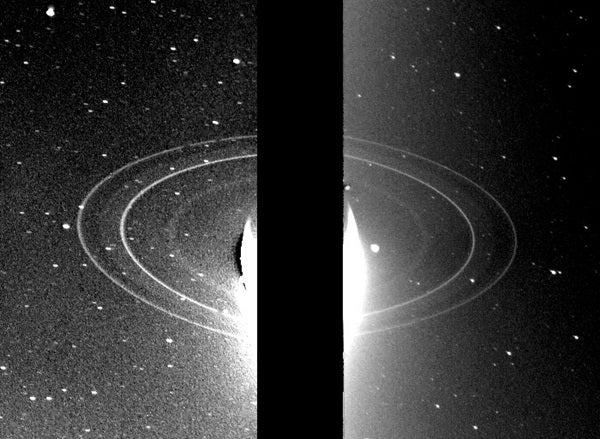
Migrating planets and screwy magnetospheres
Uranus and Neptune are called ice giants, and rightly so. The planets circle the Sun at such great distances, receiving so little external heat, that their average temperatures are hundreds of degrees below freezing.
As it turns out, ice giants are some of the most prevalent planets currently found in the universe, too. As some of the largest planets in a star system, they tend to be easier to spot when they transit their host star. However, current models say that ice giants should be an anomaly, as the window for them to form is narrow. The solar nebula — the cloud of gas and dust left over after the formation of a star from which planets are born — needs to be almost entirely dissipated for ice giants to snatch up the available gas and ice. They also first need to have substantial cores before they can accrete any that lingering gas and ice.
Figuring out exactly how and where Neptune and Uranus formed could help scientists better understand the abundance of ice giants lurking in the universe. Computer simulations suggest that the low density of planetesimals and the weak solar gravity in the primordial outer solar system would have made it very difficult for the ice giants to form where they are today.
And perhaps they didn’t. Like Jupiter and Saturn, Uranus and Neptune may have formed closer to the early Sun before, via gravitational processes, eventually migrating outward to their present positions. But how they formed isn’t the only strange aspect about our ice giants.
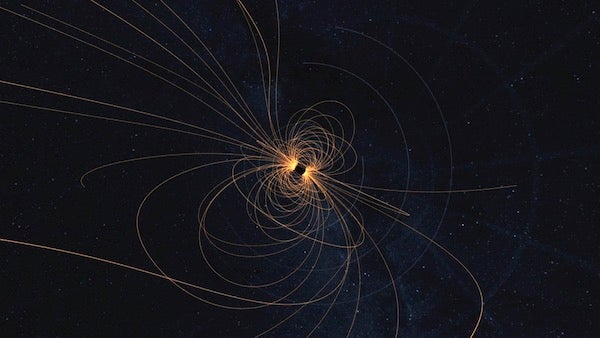
Magnetospheres are typically in line with a planet’s rotation, but Uranus’ is tipped at 59 degrees from the planet’s rotational axis and offset from its center by one-third the planet’s radius. The result is a magnetosphere that wobbles in a complex pattern as Uranus spins on its axis.
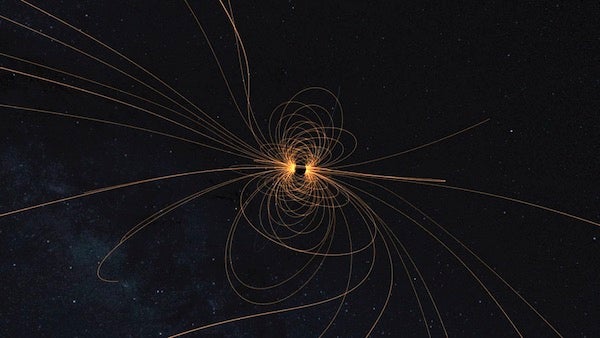
Scientists still don’t entirely understand these anomalous magnetospheres. They know that planetary magnetic fields are generated by internal dynamos, or conductive global mantle oceans. But with magnetic poles so skewed off-center, the exact cause of Uranus’ and Neptune’s screwy magnetospheres is, like their formation, still unknown.
Magnificent blue marbles
Though the planet’s strange magnetic fields and uncertain formation may have scientists scratching their heads, when Voyager 2 revealed the first images of the planets’ atmospheres, it took our collective breath away. The valuable flyby revealed some unexpected puzzles about the atmospheres and internal mechanics of both planets.
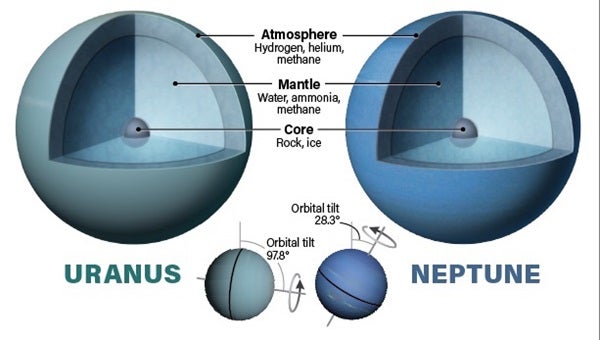
But despite receiving so little light from the Sun, Neptune has weather — and what weather! Wispy white clouds scoot above the planet, and in 1989, Voyager 2 clocked winds near a strange, previously unseen dark spot on Neptune, reaching 1,000 mph (1,609 km/h) — the strongest of any in the solar system. This spot, dubbed the Great Dark Spot, was a massive spinning storm the size of Earth. Since its discovery, the storm has faded, but new ones have appeared elsewhere on the planet. By studying these dark spots, scientist might find a window to Neptune’s lower atmosphere.
Both ice giants have atmospheres made of mostly hydrogen and helium, with small amounts of methane. It is the methane gases, however, that give Uranus its beautiful aquamarine color, as methane absorbs red light. Neptune’s color, on the other hand, is a more vivid blue. While methane contributes to that, another elementary component is likely the cause of such an intense blue — but exactly which one remains uncertain.
Beneath the atmospheres of both planets, the mantles are mostly super-hot, high-pressure global oceans of water, ammonia, and methane — essentially a liquid electrical conductor. Inside their mantles, there may exist a deep layer where water is broken down into a soup of hydrogen and oxygen ions. Thousands of miles beneath their surfaces, the pressure is so great that methane splits apart and hardens its carbon compound into diamond crystals that sink to the planets’ cores. Yes: It could be raining diamonds.
The solid core of both planets is made of iron, nickel, and silicates. Neptune is approximately 17 times Earth’s mass and has a core weighing only 1.2 Earth masses. Uranus’ core is small, only 0.55 Earth masses, while the planet’s overall mass is around 14 Earth masses.
While these facts are all well known, the internal heat of both planets presents much more of a conundrum. Uranus hardly radiates any heat at all compared to other planets in the solar system. Neptune, on the other hand, despite being 10 astronomical units (AU; where 1 AU is the average distance between Earth and the Sun) beyond Uranus, radiates 2.61 times as much energy as it receives from the Sun. The explanation for this could have to do with an ancient impact from a protoplanet which expelled most of Uranus’ heat. This would also explain the planet’s extreme tilt. But astronomers still don’t know if internal heat released by Neptune (or Uranus) varies seasonally. Another visiting spacecraft could provide more data.
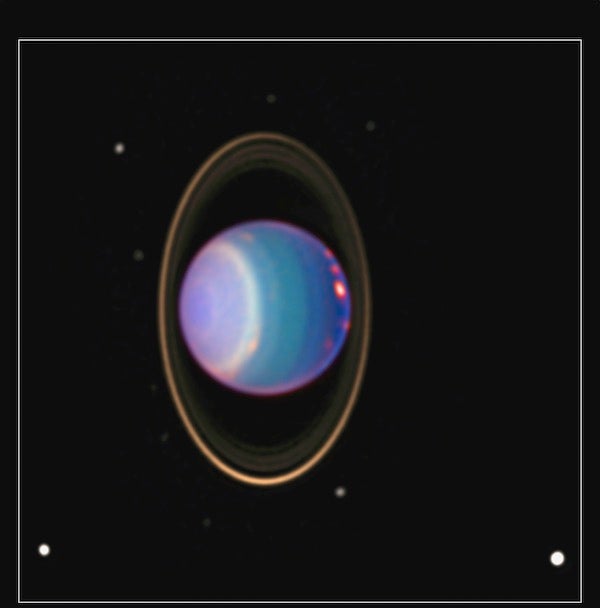
Rings: Thin, icy, and dusty
When Voyager 2 flew by Uranus and Neptune, it didn’t just shine a light on the icy worlds; it gave us the first glimpses of their rings.
Like all the giant planets in our solar system, Neptune and Uranus are each encircled by a set of rings. In 1977, James L. Elliot discovered five of Uranus’ rings, the first found around a planet other than Saturn. Further observations from Earth revealed four more and, when Voyager 2 reached the planet in 1986, a 10th ring was discovered. In total, 13 known rings circle the planet, varying in both thickness and opacity.
Several of Uranus’ small moons appear to keep its rings constrained, acting as gravitational shepherds. Most of the rings are made of particles ranging in size from 8 inches to 66 feet (20 centimeters to 20 meters) in diameter, likely composed of water-ice mixed with radiation-produced organic matter. The rings are probably no more than 600 million years old, based on observations made by Voyager 2 of the planet’s exosphere, and they may be the remains from collisions of ancient moons.
After discovering rings around Uranus, astronomers were eager to spy rings around its twin. While several claims were put forth, including the detection of incomplete arcs, it wasn’t until Voyager 2 reached Neptune that definitive rings were discovered. The planet’s five rings — Galle, Le Verrier, Lassell, Arago, and Adams — are named after astronomers who made important discoveries regarding the planet: Johann Gottfried Galle, Urbain Jean Joseph Le Verrier, and John Couch Adams all independently discovered the planet in 1846 using mathematics, making it the first planet found with calculations. François Arago suggested Le Verrier investigate the anomalies in Uranus’ motion, which hinted at Neptune’s existence, while William Lassell discovered Triton.
As it turned out, the incomplete arcs previously detected were the densest parts of the Adams ring. The rings themselves have more dust-sized grains than Uranus’, such that much of the system resembles the faint rings of Jupiter. To even see the rings clearly, light from Neptune must be blocked.
The lone flyby of the planets revealed rings previously unseen; a future mission could uncover even more about the fine structural detail of the ice giants’ ring systems and help pin down their age.
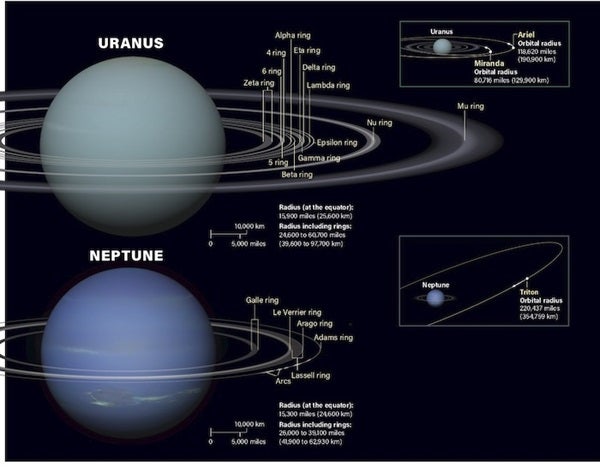
Moons small and large
The planets aren’t just surrounded by rings; over a dozen moons circle both Neptune and Uranus, and one moon may just give scientists reason to return to the ice giants.
Uranus’ 27 moons include a generous sampling of mystery and marvel. For example, the surface of Miranda, a moon over seven times smaller than our Moon, looks like a cosmic patchwork quilt and includes a gorge 12 times deeper than the Grand Canyon. Meanwhile, Ariel may have the youngest surface of Uranus’ moons, possibly redone by recent low-impact collisions. Ariel is over twice the size of Miranda.
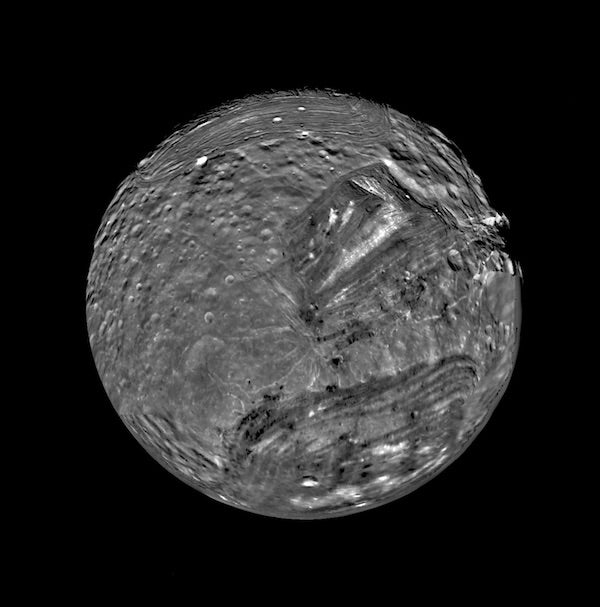
Triton has one of the more substantial atmospheres of the solar system moons, but it is still significantly thinner than Earth’s. Consisting of nitrogen, methane, and carbon monoxide, this atmosphere likely originated from volcanic activity. Besides Earth, Triton is only one of three solar system bodies known to currently be volcanically active. Evidence of ongoing geological activity points to the possibility of a subsurface ocean. As such, Triton was identified as one of the highest priority candidate ocean worlds for future missions by the NASA Outer Planets Assessment Group Roadmaps to Ocean World (ROW) group in the recent “NASA Roadmap to Ocean Worlds” report, which summarizes their findings. ROW provides a framework to guide the future of ocean world exploration over the next several decades.
Triton earning this high priority may just be what it takes to get us back to the outer solar system so we can explore the ice giants once more.
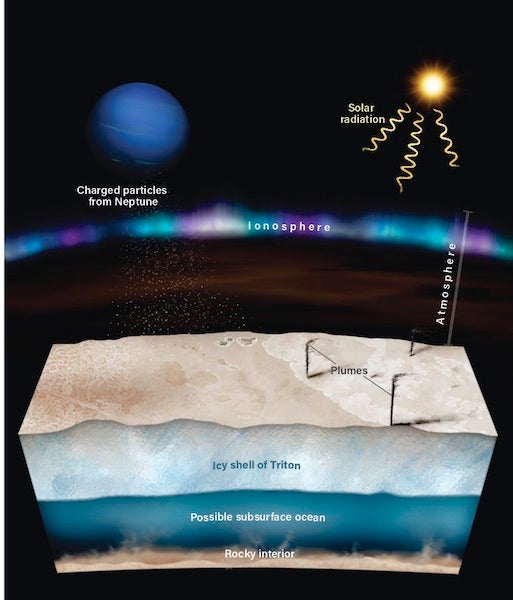
Trident: A mission to Triton
Under NASA’s Discovery Program, a new mission to the ice giants may be within reach. Started in 1992, the program provides scientists a chance to imagine innovative, low-cost ways to unlock the mysteries of the solar system.
In August 2017, a Discovery proposal period began and a small group at JPL convened a two-day brainstorming session. The group produced the Trident proposal — a flyby mission to Triton. “The whole process went from concept to a real project remarkably quickly,” recalls co-author Karl Mitchell.
The proposed Trident mission will pass within 310 miles (500 km) of the giant moon, close enough to move through its atmosphere. Trident plans to map Triton, characterize its active processes, and determine whether the moon has a magnetic field — which would strengthen the argument that the moon is hiding an ocean beneath its surface. To accomplish these tasks, Trident will need a host of instruments, including a magnetometer, both a narrow-angle and wide-angle camera, and a plasma spectrometer.
In February, NASA selected the Trident proposal as one of four Discovery-class semifinalists. The team will visit NASA in February or March 2021 for an intensive review before the agency makes their final selection of which missions will fly.
Hopefully Trident is one of them, as it’s time to return to the majestic ice giants and take the next steps in unraveling the mysteries of these enigmatic goliaths.

Jupiter: Size, distance from the Sun, orbit

Jupiter’s moon Io has likely been active for our solar system’s entire history

The largest digital camera ever made for astronomy is done

NASA seeks faster, cheaper options to return Mars samples to Earth

Circular patterns on Europa suggest how deep a lively ocean may be

When did we realize that Earth orbits the Sun?

Scientists discover an ancient volcano near the martian equator

Solar eclipse glossary

How much would I weigh on other planets?
Voyager 2: First Spacecraft at Uranus
Your browser cannot play the provided video file(s).

- A Star is Born
- How Planets Form
- What Are They, and Where Are They?
- Atmospheres
- Magnetospheres
- What's the Deal With Moons?
- The Galilean Moons of Jupiter
- Moons of Saturn, Uranus, & Neptune
- Dwarf Planets
- Dust and Plasma
- ◊Extrasolar Planets
- Pioneer 10 & 11
- Voyager 1 & 2
- New Frontiers
- ◊Lessons and Activities

Voyager 1 & 2 Voyager 1 & 2
- Launch Date: 5 September 1977
- Mission: Explore Jupiter, Saturn and their satellites
- Arrived at Jupiter: March 1979
- Arrived at Saturn: November 1980
Launched from Kennedy Space Center, Voyager 1 was the first of twin spacecrafts launched in 1977 to reach Jupiter. Voyager 1 set out to collect information on the atmospheres, interiors, satellites and magnetospheres of Jupiter and Saturn. Voyager 1 took roughly 32,000 pictures of Jupiter, Saturn and their moons and rings. When its mission was complete, Voyager 1 remained rather quiet until its cameras were turned back on in early 1990 to take pictures of our solar system. Voyager 1 took some 60 pictures of the Sun and 6 of the planets, the first shots ever taken from "outside" our Solar System. The 60 frames were combined to make the mosaic seen below. The six individual shots on the right were taken when Voyager 1 was more than 4 billion miles from Earth. Earth appears framed in brightness due to the amount of light scattered while taking the picture with Earth so close to the Sun.

FIND OUT MORE AT THE VOYAGER HOME PAGE Capturing shots of the Sun, Venus, Earth, Jupiter, Saturn, Uranus and Neptune was the last of Voyager's tasks and the cameras were once again turned off. Still speeding away from us, Voyager 1 is approaching the outer edge of our Solar System and is currently the most distant man-made object in space.
- Launch Date: 20 August 1977
- Mission: Explore all of the outer planets and their satellites
- Arrived at Jupiter: July 1979
- Arrived at Saturn: August 1981
- Arrived at Uranus: January 1986
- Arrived at Neptune: August 1989
Even though it arrived at Jupiter 4 months later, Voyager 2 actually left Earth before Voyager 1. Voyager 2's objectives were the same as Voyager 1, and they both ended up collecting about the same number of photographs of Jupiter and Saturn. Despite initial complications with Voyager 2, permission was granted to extend its mission to Uranus, Neptune and beyond.
Successful flybys of Uranus starting in January 1986 allowed for roughly 8,000 images of the planet and its satellites. A few years later, in August 1989, Voyager 2 arrived at Neptune and collected around 10,000 images.

This image of Neptune, taken by Voyager 2, shows the Great Dark Spot. Though comparable in size to the Great Red Spot on Jupiter, it is actually an atmospheric hole kind of like the one in the Earth's ozone layer. The picture below is a close up of the Great Dark Spot, also taken by Voyager 2.

Results of the Voyager missions
- Discovery of 22 new satellites: 3 at Jupiter, 3 at Saturn, 10 at Uranus, 6 at Neptune
- Discovery of Jupiter's rings, and additional information about the rings of Saturn, Uranus and Neptune
- Discovery of Uranian and Neptunian magnetospheres
- Discovery of active volcanism on Io, and active geyser-like structures on Triton
- Discovery of auroral zones on Jupiter, Saturn and Neptune

For IEEE Members
Ieee spectrum, follow ieee spectrum, support ieee spectrum, enjoy more free content and benefits by creating an account, saving articles to read later requires an ieee spectrum account, the institute content is only available for members, downloading full pdf issues is exclusive for ieee members, downloading this e-book is exclusive for ieee members, access to spectrum 's digital edition is exclusive for ieee members, following topics is a feature exclusive for ieee members, adding your response to an article requires an ieee spectrum account, create an account to access more content and features on ieee spectrum , including the ability to save articles to read later, download spectrum collections, and participate in conversations with readers and editors. for more exclusive content and features, consider joining ieee ., join the world’s largest professional organization devoted to engineering and applied sciences and get access to all of spectrum’s articles, archives, pdf downloads, and other benefits. learn more →, join the world’s largest professional organization devoted to engineering and applied sciences and get access to this e-book plus all of ieee spectrum’s articles, archives, pdf downloads, and other benefits. learn more →, access thousands of articles — completely free, create an account and get exclusive content and features: save articles, download collections, and talk to tech insiders — all free for full access and benefits, join ieee as a paying member., 50 years later, this apollo-era antenna still talks to voyager 2, dss-43 is the only antenna that can communicate with the probe.

The Deep Space Station 43 radio antenna, located at the Canberra Deep Space Communication Complex in Australia, keeps open the line of communication between humans and probes during NASA missions.
For more than 50 years, Deep Space Station 43 has been an invaluable tool for space probes as they explore our solar system and push into the beyond. The DSS-43 radio antenna, located at the Canberra Deep Space Communication Complex , near Canberra, Australia, keeps open the line of communication between humans and probes during NASA missions.
Today more than 40 percent of all data retrieved by celestial explorers, including Voyagers , New Horizons , and the Mars Curiosity rover , comes through DSS-43.
“As Australia’s largest antenna, DSS-43 has provided two-way communication with dozens of robotic spacecraft,” IEEE President-Elect Kathleen Kramer said during a ceremony where the antenna was recognized as an IEEE Milestone . It has supported missions, Kramer noted, “from the Apollo program and NASA’s Mars exploration rovers such as Spirit and Opportunity to the Voyagers’ grand tour of the solar system.
“In fact,” she said, “it is the only antenna remaining on Earth capable of communicating with Voyager 2 .”
Why NASA needed DSS-43
Maintaining two-way contact with spacecraft hurtling billions of kilometers away across the solar system is no mean feat. Researchers at NASA’s Jet Propulsion Laboratory , in Pasadena, Calif., knew that communication with distant space probes would require a dish antenna with unprecedented accuracy. In 1964 they built DSS-42—DSS-43’s predecessor—to support NASA’s Mariner 4 spacecraft as it performed the first-ever successful flyby of Mars in July 1965. The antenna had a 26-meter-diameter dish. Along with two other antennas at JPL and in Spain, DSS-42 obtained the first close-up images of Mars. DSS-42 was retired in 2000.
NASA engineers predicted that to carry out missions beyond Mars, the space agency needed more sensitive antennas. So in 1969 they began work on DSS-43, which has a 64-meter-diameter dish.
DSS-43 was brought online in December 1972—just in time to receive video and audio transmissions sent by Apollo 17 from the surface of the moon. It had greater reach and sensitivity than DSS-42 even after 42’s dish was upgraded in the early 1980s.
The gap between the two antennas’ capabilities widened in 1987, when DSS-43 was equipped with a 70-meter dish in anticipation of Voyager 2’s 1989 encounter with the planet Neptune.
DSS-43 has been indispensable in maintaining contact with the deep-space probe ever since.
The dish’s size isn’t its only remarkable feature. The dish’s manufacturer took great pains to ensure that its surface had no bumps or rough spots. The smoother the dish surface, the better it is at focusing incident waves onto the signal detector so there’s a higher signal-to-noise ratio.
DSS-43 boasts a pointing accuracy of 0.005 degrees (18 arc seconds)—which is important for ensuring that it is pointed directly at the receiver on a distant spacecraft. Voyager 2 broadcasts using a 23-watt radio. But by the time the signals traverse the multibillion-kilometer distance from the heliopause to Earth, their power has faded to a level 20 billion times weaker than what is needed to run a digital watch. Capturing every bit of the incident signals is crucial to gathering useful information from the transmissions.
The antenna has a transmitter capable of 400 kilowatts, with a beam width of 0.0038 degrees. Without the 1987 upgrade, signals sent from DSS-43 to a spacecraft venturing outside the solar system likely never would reach their target.
NASA’s Deep Space Network
The Canberra Deep Space Complex, where DSS-43 resides, is one of three such tracking stations operated by JPL. The other two are DSS-11 at the Goldstone Deep Space Communications Complex near Barstow, Calif., and DSS-63 at the Madrid Deep Space Communications Complex in Robledo de Chavela, Spain. Together, the facilities make up the Deep Space Network, which is the most sensitive scientific telecommunications system on the planet, according to NASA. At any given time, the network is tracking dozens of spacecraft carrying out scientific missions. The three facilities are spaced about 120 degrees longitude apart. The strategic placement ensures that as the Earth rotates, at least one of the antennas has a line of sight to an object being tracked, at least for those close to the plane of the solar system.
But DSS-43 is the only member of the trio that can maintain contact with Voyager 2 . Ever since its flyby of Neptune’s moon Triton in 1989, Voyager 2 has been on a trajectory below the plane of the planets, so that it no longer has a line of sight with any radio antennas in the Earth’s Northern Hemisphere.
To ensure that DSS-43 can still place the longest of long-distance calls, the antenna underwent a round of updates in 2020. A new X-band cone was installed. DSS-43 transmits radio signals in the X (8 to 12 gigahertz) and S (2 to 4 GHz) bands; it can receive signals in the X, S, L (1 to 2 GHz), and K (12 to 40 GHz) bands. The dish’s pointing accuracy also was tested and recertified.
Once the updates were completed, test commands were sent to Voyager 2. After about 37 hours, DSS-43 received a response from the space probe confirming it had received the call, and it executed the test commands with no issues.
DSS-43 is still relaying signals between Earth and Voyager 2, which passed the heliopause in 2018 and is now some 20 billion km from Earth.
Other important missions
DSS-43 has played a vital role in missions closer to Earth as well, including NASA’s Mars Science Laboratory mission. When the space agency sent Curiosity , a golf cart–size rover, to explore the Gale crater and Mount Sharp on Mars in 2011, DSS-43 tracked Curiosity as it made its nail-biting seven-minute descent into Mars’s atmosphere. It took roughly 20 minutes for radio signals to traverse the 320-million km distance between Mars and Earth, and then DSS-43 delivered the good news: The rover had landed safely and was operational.
“NASA plans to send future generations of astronauts from the Moon to Mars, and DSS-43 will play an important role as part of NASA’s Deep Space Network,” says Ambarish Natu , an IEEE senior member who is a past chair of the IEEE Australian Capital Territory (ACT) Section.
DSS-43 was honored with an IEEE Milestone in March during a ceremony held at the Canberra Deep Space Communication Complex.
“This is the second IEEE Milestone recognition given in Australia, and the first for ACT,” Lance Fung , IEEE Region 10 director, said during the ceremony. A plaque recognizing the technology is now displayed at the complex. It reads:
First operational in 1972 and later upgraded in 1987, Deep Space Station 43 (DSS-43) is a steerable parabolic antenna that supported the Apollo 17 lunar mission, Viking Mars landers, Pioneer and Mariner planetary probes, and Voyager’s encounters with Jupiter, Saturn, Uranus, and Neptune. Planning for many robotic and human missions to explore the solar system and beyond has included DSS-43 for critical communications and tracking in NASA’s Deep Space Network.
Administered by the IEEE History Center and supported by donors, the Milestone program recognizes outstanding technical developments around the world. The IEEE Australian Capital Territory Section sponsored the nomination.
- Ethernet is Still Going Strong After 50 Years ›
- The Story Behind Pixar’s RenderMan CGI Software ›
- Deep Space Station 43 - Canberra Deep Space Communication ... ›
Willie Jones is an associate editor at IEEE Spectrum . In addition to editing and planning daily coverage, he manages several of Spectrum 's newsletters and contributes regularly to the monthly Big Picture section that appears in the print edition.
Robert Kahn: The Great Interconnector
Video friday: spacehopper, led touchscreen is also a pv charger, more from the institute, the legacy of the datapoint 2200 microcomputer, enhance your tech and business skills during ieee education week, how engineers at digital equipment corp. saved ethernet, a novel ieee workshop showcases jamaica’s engineering community, stuart parkin revolutionized disk drive storage.

Uranus and Neptune aren't made of what we thought, new study hints
A study suggests the ice giants Uranus and Neptune aren't quite as watery as previously thought. They may also contain huge amounts of frozen methane, potentially solving the puzzle of how they formed.

Astronomers have long believed that the ice giants Uranus and Neptune are rich in frozen water. However, a new study suggests they may also have tons of methane ice.
The findings could help solve a puzzle about how these icy worlds formed.
Much about Uranus and Neptune remains unknown. These ice giant worlds have had just a single spacecraft visitor, Voyager 2 , which flew past them in the 1980s. As a result, scientists have only a hazy idea of the ice giants' compositions — for example, that they contain significant amounts of oxygen, carbon and hydrogen.
Related: The rings of Uranus are being held back by its pesky moons
To learn more about what Uranus and Neptune are made of, astronomers have devised models that match the physical properties that Voyager 2 and Earth-based telescopes have measured. Many models assume the planets have a thin hydrogen and helium envelope; an underlying layer of compressed, superionic water and ammonia; and a central rocky core. (The water is what gives them their "ice giant" tag.) Some estimates suggest Uranus and Neptune may each have 50,000 times the quantity of water in Earth's oceans.
But the authors of the new study say these models ignore the way the ice giants formed. As Uranus and Neptune coalesced from the dust cloud surrounding the young sun , they gobbled up, or accreted, objects called planetesimals. The team says these planetesimals resemble present-day comets such as 67P/Churyumov-Gerasimenko, which originate in the Kuiper Belt, the doughnut-shaped region of icy bodies beyond the orbit of Neptune.
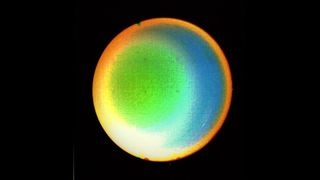
Unlike the supposedly water-rich ice giants, though, a large fraction of these planetesimal-like objects are rich in carbon . So "how is it possible to form an icy giant from ice-poor building blocks?" said Uri Malamud , the study's lead author and a planetary scientist at Technion – Israel Institute of Technology.
Get the Space.com Newsletter
Breaking space news, the latest updates on rocket launches, skywatching events and more!
To resolve this apparent paradox, Malamud and his co-authors built hundreds of thousands of models of Uranus' and Neptune's interiors. The algorithm they used "starts matching a suitable composition for the surface of the planet, and it gradually works its way deeper into the central point of the planet." They considered several chemicals, including iron, water and methane, the main component of natural gas. Then, they tried to determine which model most resembled the actual ice giants in traits such as radius and mass.
Of the various models they built, the astronomers found that those with methane fit their criteria, with the methane — either in solid chunks or, given the pressure, in a mushy state — forming a thick layer between the hydrogen-helium envelope and the water layer. In some models, methane accounted for 10% of the planet's mass.
The team published their results, which have not yet been peer-reviewed, to the preprint server arXiv in March.
— Scientists probe the weird, alien water inside of Uranus and Neptune
— Stinky 'mushball' hailstones on Uranus may explain an atmospheric anomaly there
— Rosetta's 'rubber ducky' comet changed color as it neared the sun. Here's why.
This methane holds the key to resolving the ice paradox. The ice could have formed when hydrogen in the growing planets chemically reacted with the carbon in the planetesimals the planets accreted, the researchers said. Such reactions happen under high temperatures and superhigh pressures — millions of times the air pressure we experience on Earth. These are the exact conditions scientists think existed in the developing planets.
The findings could provide greater insight into these little-understood planets, although verifying if they are actually rich in methane would be challenging, Malamud said. That would be a goal for one of several proposed missions from NASA and other space agencies that aim to explore Uranus.
Join our Space Forums to keep talking space on the latest missions, night sky and more! And if you have a news tip, correction or comment, let us know at: [email protected].

Deepa Jain is a freelance science writer from Bengaluru, India. Her educational background consists of a master's degree in biology from the Indian Institute of Science, Bengaluru, and an almost-completed bachelor's degree in archaeology from the University of Leicester, UK. She enjoys writing about astronomy, the natural world and archaeology.
A 'snowball fight' may help scientists find life on Jupiter's moon Europa
Arrokoth the 'space snowman' and other Kuiper Belt objects may be packed with ancient ice
The Lyrid meteor shower peaks this weekend, but don't expect much this year
Most Popular
- 2 Rocket Lab gearing up to refly Electron booster for 1st time
- 3 'Transformers One' 1st trailer unveils Optimus Prime and Megatron's shared history (video)
- 4 China rolls out rocket for next astronaut mission to Tiangong space station (photos)
- 5 SpaceX launches Starlink satellites on company's 40th mission of 2024 (video)

Suggested Searches
- Climate Change
- Expedition 64
- Mars perseverance
- SpaceX Crew-2
- International Space Station
- View All Topics A-Z
Humans in Space
Earth & climate, the solar system, the universe, aeronautics, learning resources, news & events.

Join NASA in Celebrating Earth Day 2024 by Sharing a #GlobalSelfie

NASA Selects New Aircraft-Driven Studies of Earth and Climate Change

The Ocean Touches Everything: Celebrate Earth Day with NASA
- Search All NASA Missions
- A to Z List of Missions
- Upcoming Launches and Landings
- Spaceships and Rockets
- Communicating with Missions
- James Webb Space Telescope
- Hubble Space Telescope
- Why Go to Space
- Astronauts Home
- Commercial Space
- Destinations
- Living in Space
- Explore Earth Science
- Earth, Our Planet
- Earth Science in Action
- Earth Multimedia
- Earth Science Researchers
- Pluto & Dwarf Planets
- Asteroids, Comets & Meteors
- The Kuiper Belt
- The Oort Cloud
- Skywatching
- The Search for Life in the Universe
- Black Holes
- The Big Bang
- Dark Energy & Dark Matter
- Earth Science
- Planetary Science
- Astrophysics & Space Science
- The Sun & Heliophysics
- Biological & Physical Sciences
- Lunar Science
- Citizen Science
- Astromaterials
- Aeronautics Research
- Human Space Travel Research
- Science in the Air
- NASA Aircraft
- Flight Innovation
- Supersonic Flight
- Air Traffic Solutions
- Green Aviation Tech
- Drones & You
- Technology Transfer & Spinoffs
- Space Travel Technology
- Technology Living in Space
- Manufacturing and Materials
- Science Instruments
- For Kids and Students
- For Educators
- For Colleges and Universities
- For Professionals
- Science for Everyone
- Requests for Exhibits, Artifacts, or Speakers
- STEM Engagement at NASA
- NASA's Impacts
- Centers and Facilities
- Directorates
- Organizations
- People of NASA
- Internships
- Our History
- Doing Business with NASA
- Get Involved
- Aeronáutica
- Ciencias Terrestres
- Sistema Solar
- All NASA News
- Video Series on NASA+
- Newsletters
- Social Media
- Media Resources
- Upcoming Launches & Landings
- Virtual Events
- Sounds and Ringtones
- Interactives
- STEM Multimedia

Work Underway on Large Cargo Landers for NASA’s Artemis Moon Missions

Mars Science Laboratory: Curiosity Rover

NASA Open Science Initiative Expands OpenET Across Amazon Basin

NASA Motion Sickness Study Volunteers Needed!

Students Celebrate Rockets, Environment at NASA’s Kennedy Space Center


AI for Earth: How NASA’s Artificial Intelligence and Open Science Efforts Combat Climate Change

Sols 4159-4160: A Fully Loaded First Sol

NASA’s Juno Gives Aerial Views of Mountain, Lava Lake on Io

Hubble Captures a Bright Galactic and Stellar Duo

NASA’s TESS Returns to Science Operations

Astronauts To Patch Up NASA’s NICER Telescope

Hubble Goes Hunting for Small Main Belt Asteroids

NASA’s Near Space Network Enables PACE Climate Mission to ‘Phone Home’

NASA Photographer Honored for Thrilling Inverted In-Flight Image

NASA Langley Team to Study Weather During Eclipse Using Uncrewed Vehicles

ARMD Solicitations

Amendment 10: B.9 Heliophysics Low-Cost Access to Space Final Text and Proposal Due Date.

Tech Today: Taking Earth’s Pulse with NASA Satellites
Earth Day 2024: Posters and Virtual Backgrounds

NASA Names Finalists of the Power to Explore Challenge

Diez maneras en que los estudiantes pueden prepararse para ser astronautas

Astronauta de la NASA Marcos Berríos

Resultados científicos revolucionarios en la estación espacial de 2023
Voyager 2 image of uranus.

This is an image of the planet Uranus taken by the spacecraft Voyager 2. NASA’s Voyager 2 spacecraft flew closely past distant Uranus, the seventh planet from the Sun, in January 1986.
Image Credit: NASA/JPL

- The Contents
- The Making of
- Where Are They Now
- Frequently Asked Questions
- Q & A with Ed Stone
golden record
Where are they now.
- frequently asked questions
- Q&A with Ed Stone
Galleries of Images Voyager Took
The Voyager 1 and 2 spacecraft explored Jupiter, Saturn, Uranus and Neptune before starting their journey toward interstellar space. Here you'll find some of those iconic images, including "The Pale Blue Dot" - famously described by Carl Sagan - and what are still the only up-close images of Uranus and Neptune.
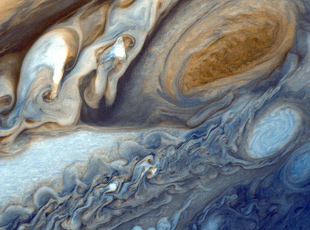
Photography of Jupiter began in January 1979, when images of the brightly banded planet already exceeded the best taken from Earth. Voyager 1 completed its Jupiter encounter in early April, after taking almost 19,000 pictures and many other scientific measurements. Voyager 2 picked up the baton in late April and its encounter continued into August. They took more than 33,000 pictures of Jupiter and its five major satellites.
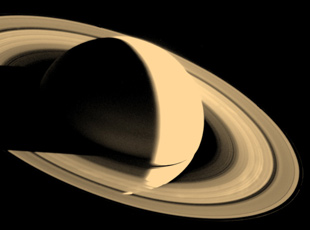
The Voyager 1 and 2 Saturn encounters occurred nine months apart, in November 1980 and August 1981. Voyager 1 is leaving the solar system. Voyager 2 completed its encounter with Uranus in January 1986 and with Neptune in August 1989, and is now also en route out of the solar system.
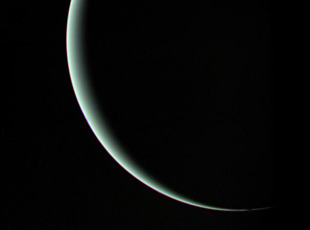
NASA's Voyager 2 spacecraft flew closely past distant Uranus, the seventh planet from the Sun, in January. At its closet, the spacecraft came within 81,800 kilometers (50,600 miles) of Uranus's cloudtops on Jan. 24, 1986. Voyager 2 radioed thousands of images and voluminous amounts of other scientific data on the planet, its moons, rings, atmosphere, interior and the magnetic environment surrounding Uranus.
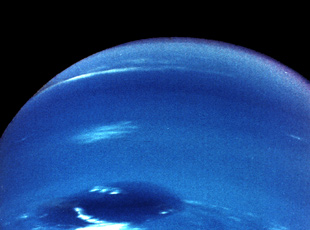
In the summer of 1989, NASA's Voyager 2 became the first spacecraft to observe the planet Neptune, its final planetary target. Passing about 4,950 kilometers (3,000 miles) above Neptune's north pole, Voyager 2 made its closest approach to any planet since leaving Earth 12 years ago. Five hours later, Voyager 2 passed about 40,000 kilometers (25,000 miles) from Neptune's largest moon, Triton, the last solid body the spacecraft will have an opportunity to study.
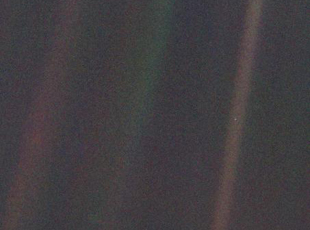
This narrow-angle color image of the Earth, dubbed 'Pale Blue Dot', is a part of the first ever 'portrait' of the solar system taken by Voyager 1. The spacecraft acquired a total of 60 frames for a mosaic of the solar system from a distance of more than 4 billion miles from Earth and about 32 degrees above the ecliptic. From Voyager's great distance Earth is a mere point of light, less than the size of a picture element even in the narrow-angle camera. Earth was a crescent only 0.12 pixel in size. Coincidentally, Earth lies right in the center of one of the scattered light rays resulting from taking the image so close to the sun. This blown-up image of the Earth was taken through three color filters -- violet, blue and green -- and recombined to produce the color image. The background features in the image are artifacts resulting from the magnification.

Scientists Thought They Knew What Uranus and Neptune Were Made Of. They Were Fooled.
- Because Uranus and Neptune are so far away, scientists only have educated guesses about the combination of ices and gases that make up these ice giants.
- While the general understanding is that these planets both have large amounts of water ice, a new study posits that a significant portion of that ice is likely actually methane.
- It’s probable that organic-rich material found in planetesimals interacted with the planets’ hydrogen/helium atmosphere and high temps and pressures of the early planet development to develop a layer of methane ice that could account for as much as 10 percent of these planets’ masses.
The ice giants Uranus and Neptune live up to their name. Although humans have only ever sent one spacecraft (Voyager 2) toward these far-flung worlds, scientists have a pretty good idea that these planets contain ice—and lots of it. Some estimates place these planets’ water content at around 50,000 times what’s found in Earth’s oceans.
However, the exact composition of that water is up for debate. Neptune, for example, has an atmosphere made of hydrogen and helium (with just a tinge of methane), and it doesn’t really have a surface—or, at least, not what we think of as a surface. NASA describes the “surface” of Neptune as “extend[ing] to great depths, gradually merging into water and other melted ices over a heavier, solid core with about the same mass as Earth.”
But scientists at the Technion–Israel Institute of Technology state in a new, not-yet-peer reviewed study that the planet could contain much more methane ice than previously believed. The results were published on the pre-print server arXiv in March .
To understand this overlooked composition means going back to Uranus and Neptune’s formation billions of years ago. To contain so much water, the planets must “accrete,” or gather under its immense gravity , ice-rich planetesimals during its formation. However, when analyzing planetesimals in the Kuiper belt—of which the notoriously demoted Pluto is a member—they’re mostly made of refractory materials, meaning they’re “ice poor.”
So, where exactly did all this ice come from?
“Uranus and Neptune are commonly considered ice giants, and it is often assumed that, in addition to a solar mix of hydrogen and helium, they contain roughly twice as much water as rock,” the study reads. “We show that chemical reactions between planetesimals dominated by organic-rich refractory materials and the hydrogen in gaseous atmospheres of protoplanets can form large amounts of methane ‘ice’. Uranus and Neptune could thus be compatible with having accreted refractory-dominated planetesimals, while still remaining icy.”
To figure out this mystery, scientists developed thousands of random statistical computer models of Uranus and Neptune’s interior, created a surface composition, and worked inward. When tested with several different chemicals and various water/rock compositions, the closest recreation of Uranus and Neptune’s radius and mass required vast amounts of methane ice formed through interactions with organic-rich (ice-poor) planetesimals and the planet’s hydrogen atmosphere. This formation was also helped by the high temperature, high pressure environment that occurs during the chaotic development of planets.
The paper states that this methane ice would likely be in a chunky, mushy layer between the hydrogen/helium atmosphere and the lower layer of water. According to Live Science , some models even showed that methane could make up as much as 10 percent of these planets’ masses.
“While the oxygen in rocky minerals and small amounts of CO ice will react with the hydrogen to form additional water, the carbon inside refractory organics will form very significant amounts of methane,” the paper reads. “Our random model generator shows that such methane-rich planets can fit the observed properties of Uranus and Neptune.”
Resolving many of these compositional mysteries requires sending a spacecraft to Uranus—the exploratory path for which was laid out by Voyager 2 in the 1980s. Luckily, NASA has recognized a mission to Uranus as of the “highest priority” as part of its Planetary Science and Astrobiology Decadal Survey. Hopefully, when that mission finally arrives, we’ll learn for sure what really makes up these fascinating icy worlds.
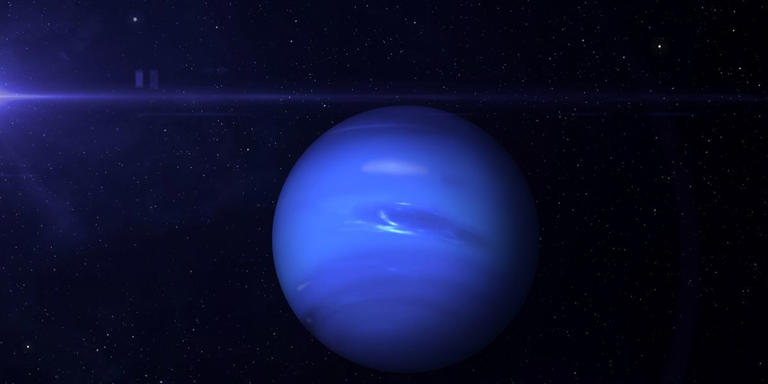

Uranus is the seventh planet from the Sun, and the third largest planet in our solar system. It appears to spin sideways.
All About Uranus
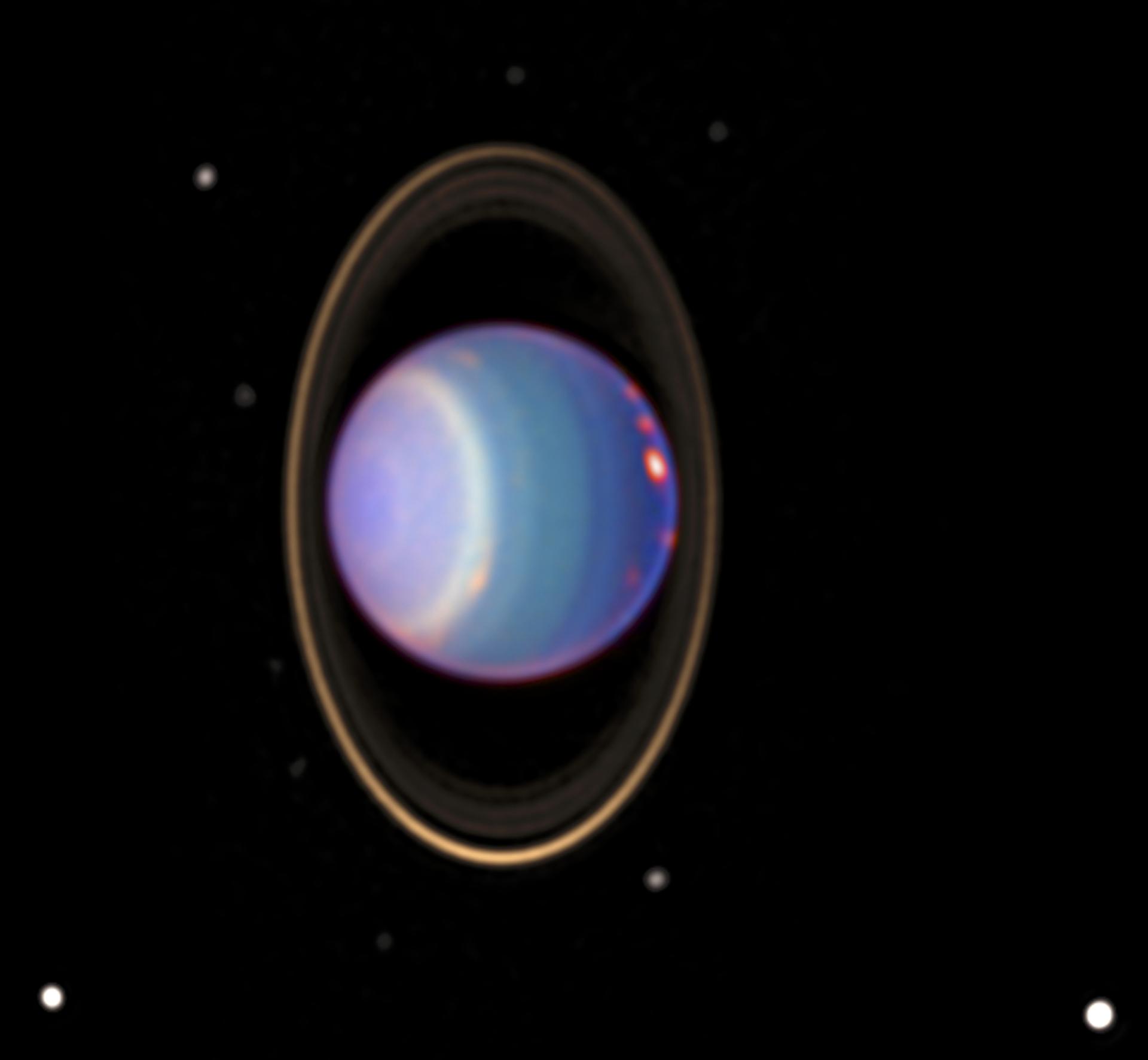
Uranus is about four times wider than Earth.
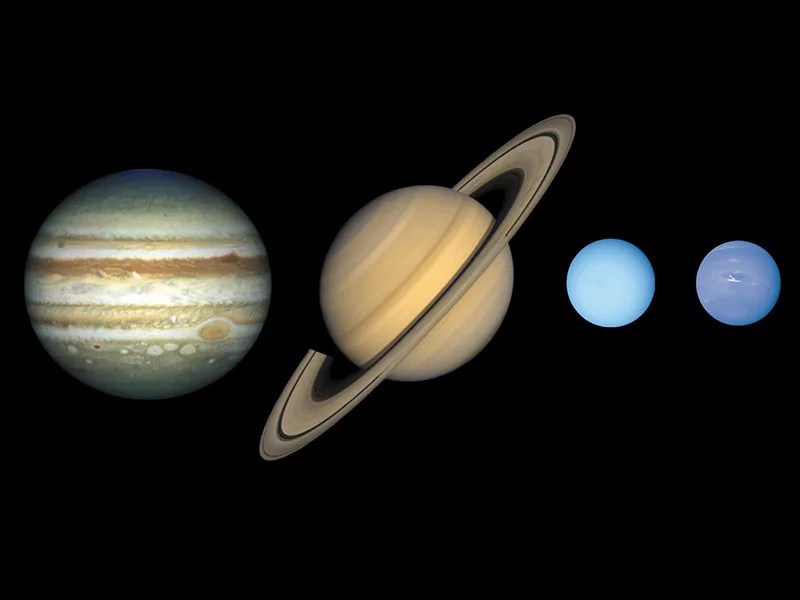
Seventh Planet
Uranus is about 19.8 AU from the Sun. Earth = 1.
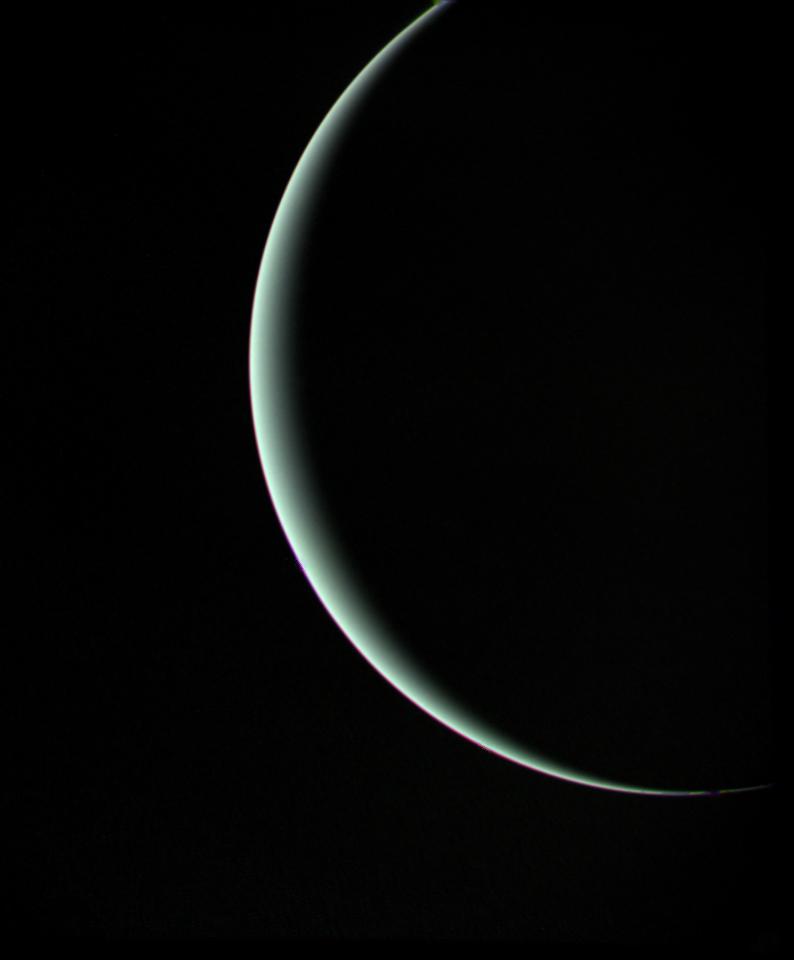
A Uranian Year
It takes Uranus 84 Earth years to make a trip around the Sun.
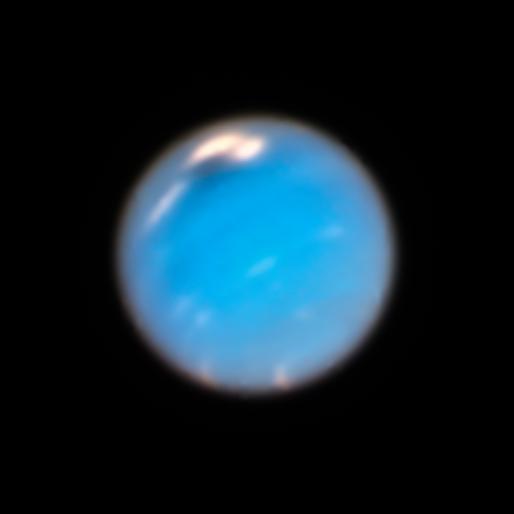
Fluid Planet
Uranus is mostly a mass of "icy" fluid around a rocky core.
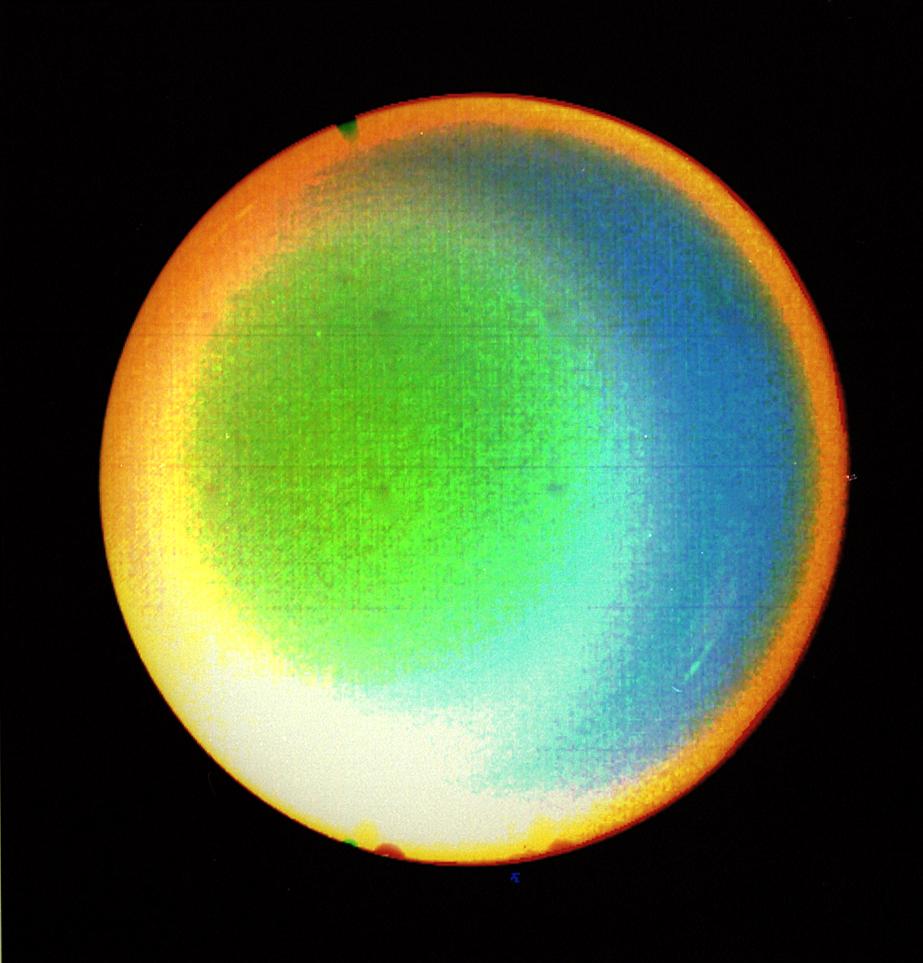
Bring a Spacesuit
Atmosphere: molecular hydrogen and atomic helium with a bit of methane.

Literary Moons
Uranus' 28 moons are named for characters in literature.
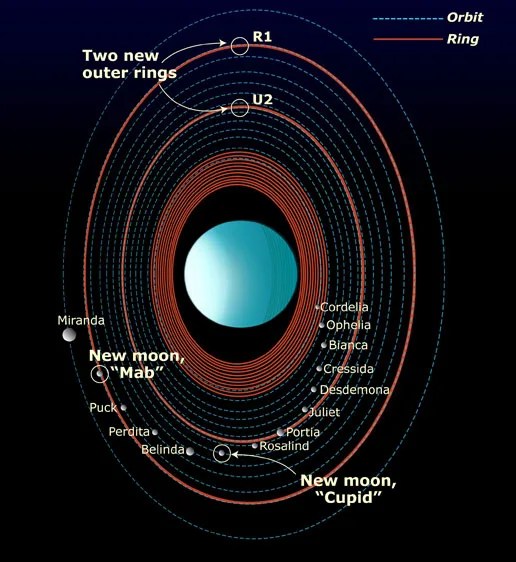
Inner rings are dark; outer rings are brightly colored.
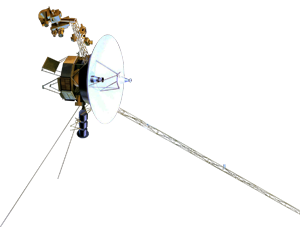
Lonely Planet
NASA's Voyager 2 is the only spacecraft to visit Uranus.
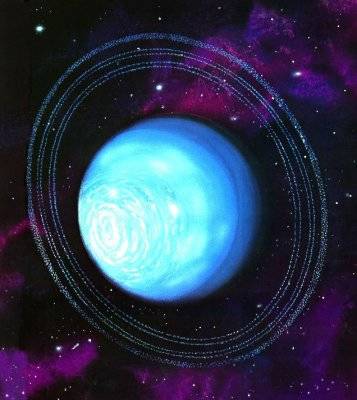
Uranus cannot support life as we know it.
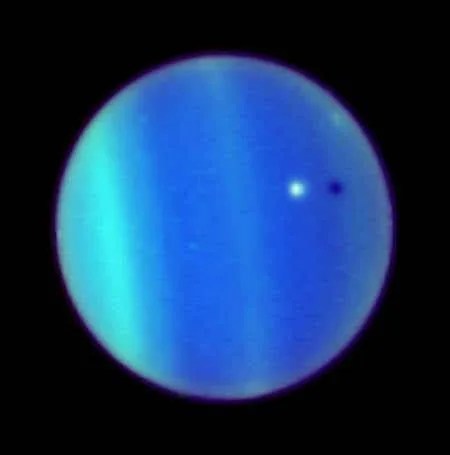
East to West Rotation
Uranus is the only planet that rotates on its side.
Planet Uranus Overview
Uranus is the seventh planet from the Sun, and it's the third largest planet in our solar system – about four times wider than Earth. The diameter at its equator is 31,763 miles (51,120 kilometers).
Uranus is a very cold and windy planet. It is surrounded by faint rings, and more than two dozen small moons as it rotates at a nearly 90-degree angle from the plane of its orbit. This unique tilt makes Uranus appear to spin on its side.
Uranus is blue-green in color due to large amounts of methane, which absorbs red light but allows blues to be reflected back into space. The atmosphere is mostly hydrogen and helium, but also includes large amounts of water, ammonia and methane.
Astronomer William Herschel tried unsuccessfully to name his discovery Georgium Sidus (George's star in Latin) after his patron, England's King George III. Instead, the planet was eventually named for Uranus, the Greek god of the sky, who was also the father of Kronos (or Saturn in Roman mythology).
Only one spacecraft has explored the ice giant up close, NASA's Voyager 2. In January 1986, Voyager 2 made a close approach to Uranus , snapping images of the planet and some its moons . A new mission to Uranus was one of the highest priority objectives outlined in the Planetary Science and Astrobiology Decadal Survey 2023-2032 . The possibility of a flagship mission to Uranus will be a focus of planetary science at NASA in the years to come.
Pop Culture
Uranus is the source of more than a few jokes, and witty – or not so witty – puns. The ice giant also has been a destination for fictional stories, and on TV shows such as "Doctor Who." The radioactive element uranium was named after Uranus when it was discovered in 1789, just eight years after the planet was discovered.
Planet Uranus Stories
Ringing in the Holidays
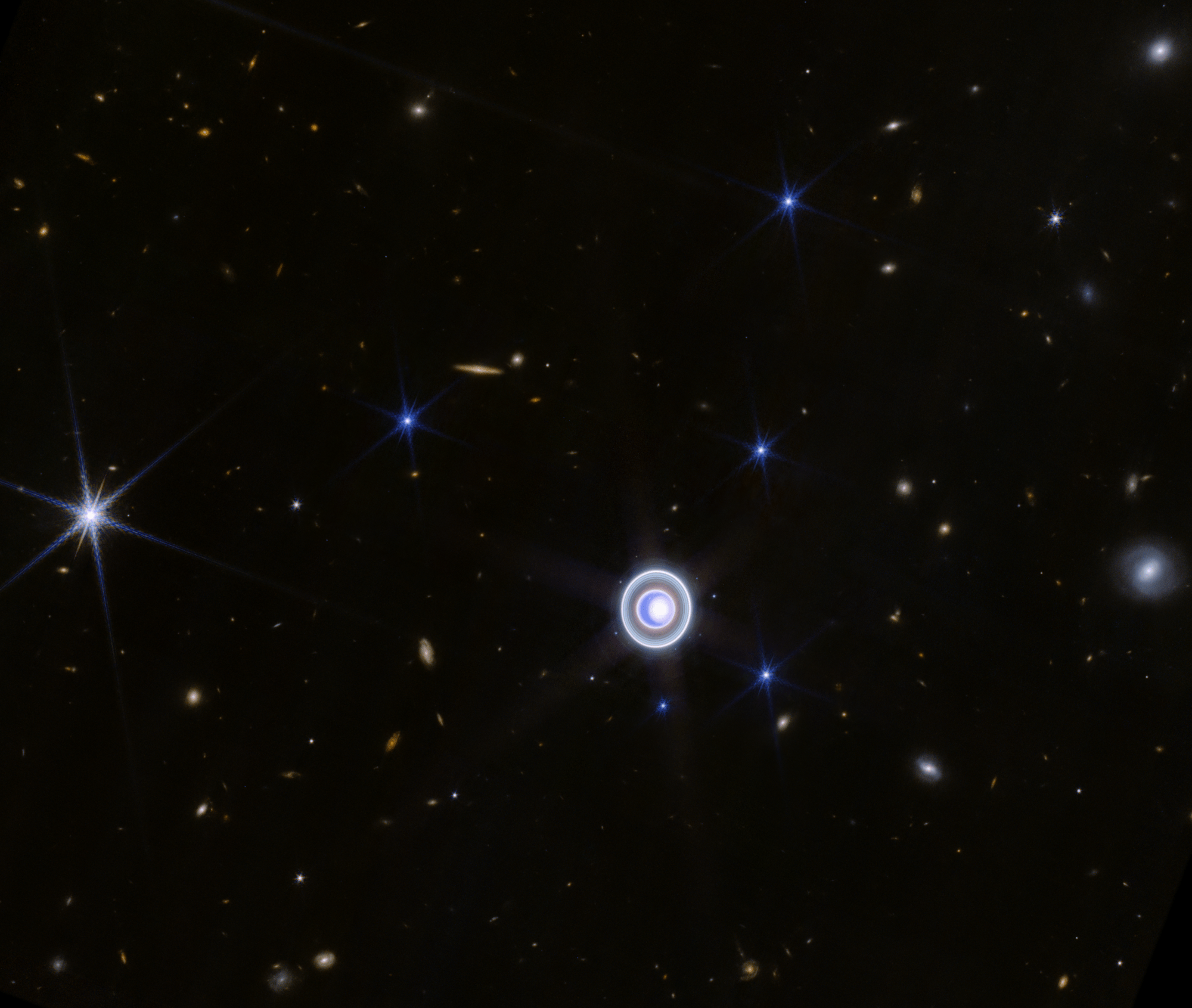
NASA’s Webb Rings in Holidays With Ringed Planet Uranus
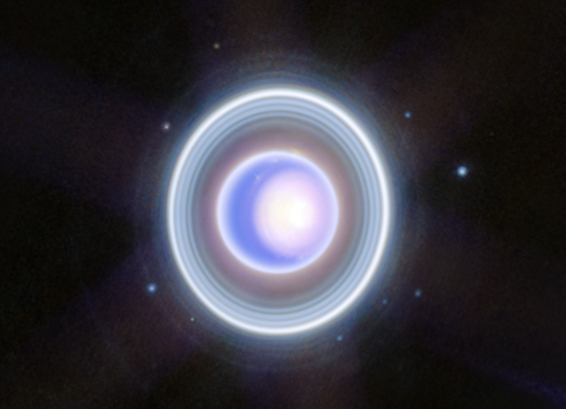
All Eyes on the Ice Giants

NASA Scientists Make First Observation of a Polar Cyclone on Uranus
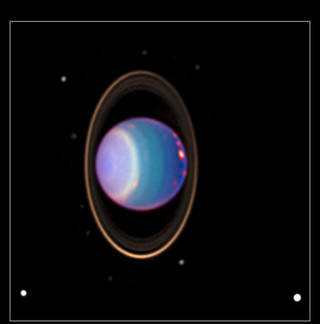
New Study of Uranus’ Large Moons Shows 4 May Hold Water
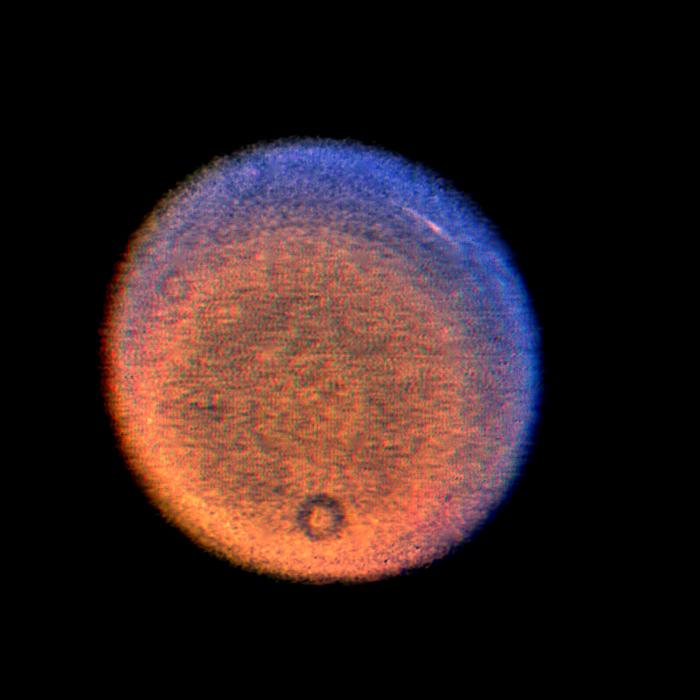
For Kids: All About Planet Uranus
Facts about Planet Uranus for kids.
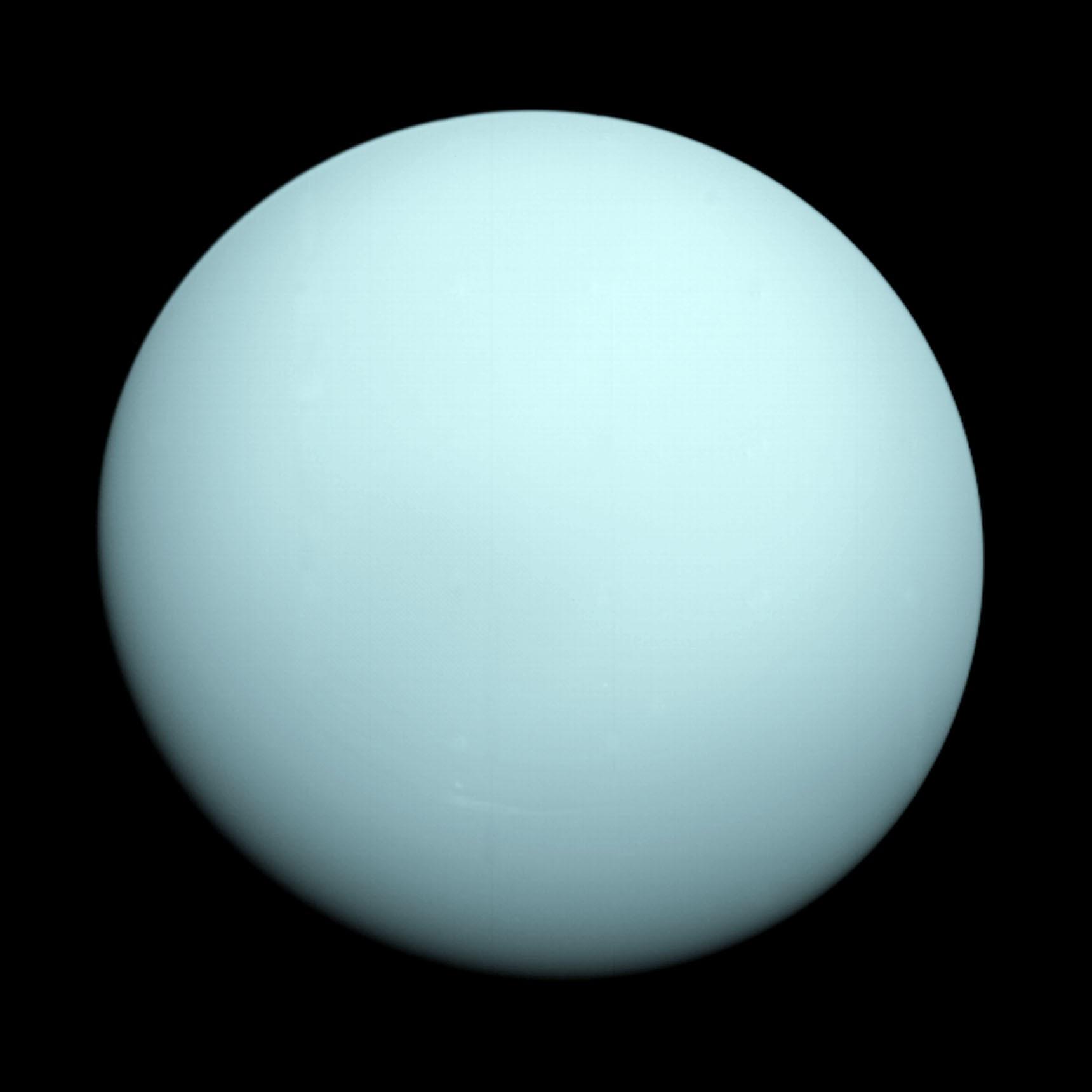
NASA Photojournal: Uranus
Images of Uranus from NASA spacecraft.
Discover More Topics From NASA
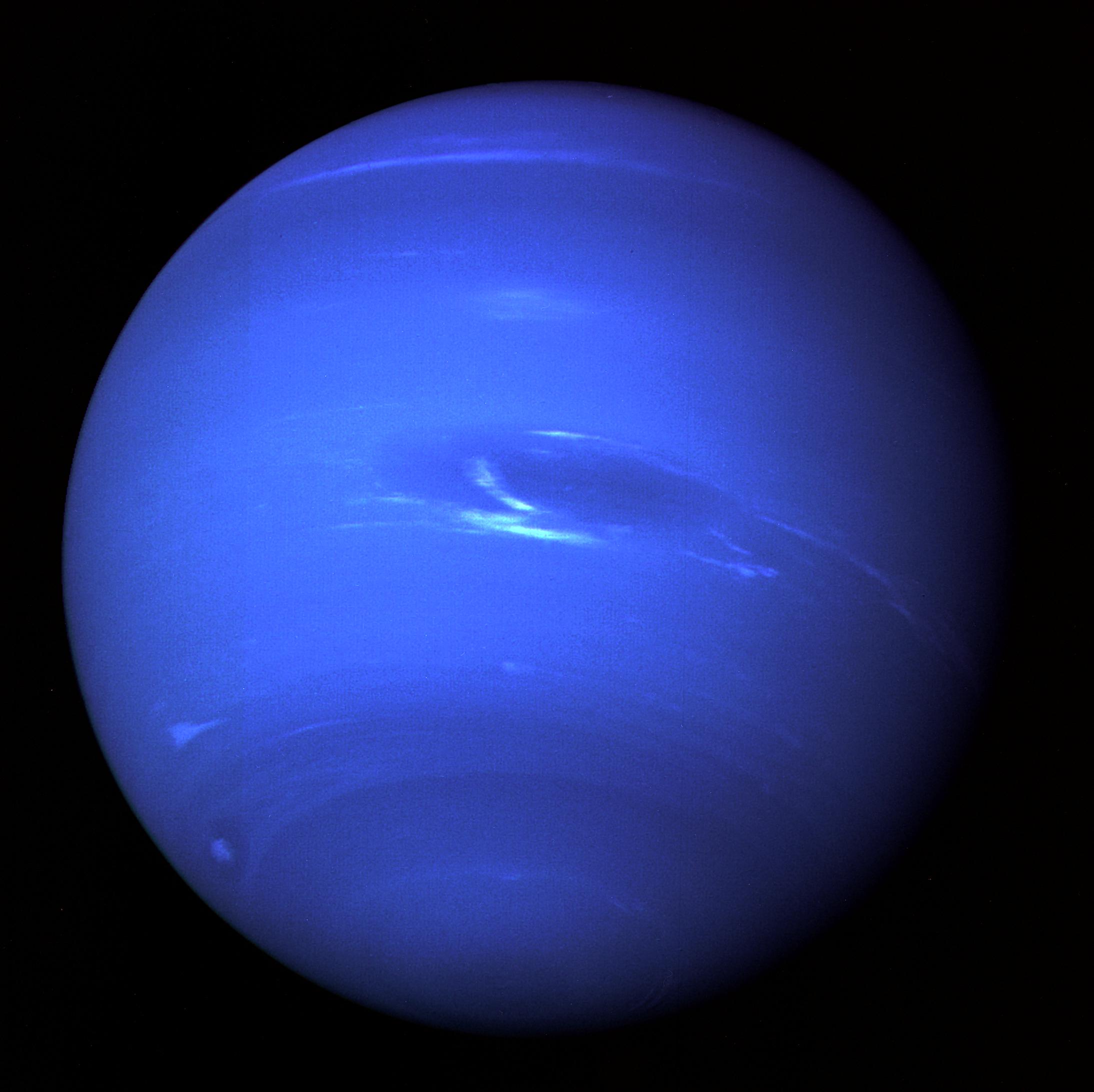

Not Frozen Ice, But Uranus And Neptune May Contain Methane, Claims New Study
Curated By : Buzz Staff
Local News Desk
Last Updated: April 20, 2024, 18:26 IST
Delhi, India

The revelation has been done basis Voyager 2 data.
Study suggests that Uranus and Neptune have a thin hydrogen and helium envelope, a buried superionic layer of water and ammonia, and a rocky core.
In 1980, NASA’s Voyager 2 spacecraft made a big revelation about the two important planets of the solar system, Uranus and Neptune. At that time, based on the information received from Voyager, scientists had concluded that there was a large amount of ice frozen on the two planets. As is usually the case, ice was meant to be frozen water. But, a new study has shown that these planets may also contain substantial amounts of methane ice.
It is being said that this discovery can help in solving the puzzle of how both planets were formed. Uranus and Neptune have been a source of mystery due to their distance from Earth and the limited data available. Astronomers have developed models based on these observations, which suggest that the planets have a thin hydrogen and helium envelope, a buried superionic layer of water and ammonia, and a rocky core, with a water component making them “ice giants”.
The new study challenges this notion by considering the formation of Uranus and Neptune. According to the report, as these planets formed from the primordial dust cloud around the young Sun, they may have swallowed bodies similar to present-day comets, also called planetesimals.
These small celestial bodies are thought to contain high levels of carbon, unlike the presumed water-dominated materials suggested in existing models. “How can we explain the formation of an icy giant using building blocks lacking in ice?” queries Uri Malamud, a planetary scientist at Technion–Israel Institute of Technology and the lead author of the study.
To reconcile this inconsistency, the researchers developed numerous models of Uranus and Neptune’s internal structures, examining different compositions such as iron, water, and methane. They discovered that models incorporating methane, either as solid masses or in a semi-liquid state under immense pressure, most accurately matched the observed characteristics of the planets. The presence of methane may help resolve the paradox of how these ice giants came to be. Scientists propose that methane ice formed when hydrogen in growing planets chemically reacted with carbon, which would have grown in greater quantities in developing planets. Future missions sent to these planets will be able to confirm these results.

IMAGES
VIDEO
COMMENTS
Uranus Approach. NASA's Voyager 2 spacecraft flew closely past distant Uranus, the seventh planet from the Sun, in January 1986. At its closest, the spacecraft came within 81,500 kilometers (50,600 miles) of Uranus's cloudtops on Jan. 24, 1986. Voyager 2 radioed thousands of images and voluminous amounts of other scientific data on the planet ...
A new moon orbiting the planet Uranus has been discovered in images taken by NASA's Voyager 2 spacecraft. Voyager imaging team scientists at JPL found the small moon in long-exposure images of Uranus and its rings taken by Voyager 2's narrow-angle camera in late December. Conclusive evidence of the satellite's orbit was seen in pictures taken ...
Voyager 2 was also to explore Jupiter and Saturn, but on a trajectory that would have the option of continuing on to Uranus and Neptune, or being redirected to Titan as a backup for Voyager 1. Upon successful completion of Voyager 1's objectives, Voyager 2 would get a mission extension to send the probe on towards Uranus and Neptune.
About the mission. The Voyager 2 spacecraft, which has been in operation since 1977 and is the only spacecraft to have ever visited Uranus and Neptune, has made its way to interstellar space, where its twin spacecraft, Voyager 1, has resided since August 2012. During its travels through the outer solar system, Voyager 2 visited all four gas ...
While Voyager 1 focused on Jupiter and Saturn, Voyager 2 visited both those planets and also ventured to Uranus and Neptune. Voyager 2's mission to those last two planets would be humanity's only ...
Voyager 2 made its closest approach to Uranus on January 24, 1986, coming within 81,500 km (50,600 miles) of the planet's cloud tops. This was the probe's first solo planetary flyby, since Voyager 1 ended its tour of the outer planets at Saturn's moon Titan.. The Uranian moon Miranda, imaged by Voyager 2. Uranus is the third-largest and fourth most massive planet in the Solar System.
It's the latest mission that's a direct consequence of Voyager 2's brief visit to the Uranus system in January 1986. "Voyager 2's flyby of Uranus was a bull's-eye — it went directly through the ...
Nearly 200 years later, Voyager 2 became the first spacecraft to visit Uranus and Neptune, in 1986 and 1989 respectively. NASA/JPL. The Space Age Blasted off when the Soviet Union launched the ...
NASA's Voyager 2 spacecraft has found six additional small moons in orbit around the planet Uranus, doubling the number of Uranian satellites known. Scientists on the Voyager imaging team found the moons in long-exposure images returned by the spacecraft over the past two weeks. The exposures were designed to search for new moons or rings.
Three decades later, scientists reinspecting that data found one more secret. Unbeknownst to the entire space physics community, 34 years ago Voyager 2 flew through a plasmoid, a giant magnetic bubble that may have been whisking Uranus's atmosphere out to space. The finding, reported in Geophysical Research Letters, raises new questions about ...
JPL is a federally funded research and development center managed for NASA by Caltech.
Voyager 2's objectives were the same as Voyager 1, and they both ended up collecting about the same number of photographs of Jupiter and Saturn. Despite initial complications with Voyager 2, permission was granted to extend its mission to Uranus, Neptune and beyond. Successful flybys of Uranus starting in January 1986 allowed for roughly 8,000 ...
The primary mission was the exploration of Jupiter and Saturn. After making a string of discoveries there — such as active volcanoes on Jupiter's moon Io and intricacies of Saturn's rings — the mission was extended. Voyager 2 went on to explore Uranus and Neptune, and is still the only spacecraft to have visited those outer planets.
NASA engineers predicted that to carry out missions beyond Mars, the space agency needed more sensitive antennas. So in 1969 they began work on DSS-43, which has a 64-meter-diameter dish.
Much about Uranus and Neptune remains unknown. These ice giant worlds have had just a single spacecraft visitor, Voyager 2, which flew past them in the 1980s. As a result, scientists have only a ...
Launched in 1977, the twin Voyager spacecraft flew by Saturn and Jupiter, and Voyager 2 flew by Uranus and Neptune. They are both exploring interstellar space, outside the bubble of particles and magnetic fields created by the Sun, called the heliosphere. Voyager 2 continues to operate normally. News Media Contact Calla Cofield
This is an image of the planet Uranus taken by the spacecraft Voyager 2. NASA's Voyager 2 spacecraft flew closely past distant Uranus, the seventh planet from the Sun, in January 1986. Image Credit: NASA/JPL.
The Voyager 1 and 2 Saturn encounters occurred nine months apart, in November 1980 and August 1981. Voyager 1 is leaving the solar system. Voyager 2 completed its encounter with Uranus in January 1986 and with Neptune in August 1989, and is now also en route out of the solar system.
The ice giants Uranus and Neptune live up to their name. Although humans have only ever sent one spacecraft (Voyager 2) toward these far-flung worlds, scientists have a pretty good idea that these ...
In January 1986, Voyager 2 made a close approach to Uranus, snapping images of the planet and some its moons. A new mission to Uranus was one of the highest priority objectives outlined in the Planetary Science and Astrobiology Decadal Survey 2023-2032. The possibility of a flagship mission to Uranus will be a focus of planetary science at NASA ...
In 1980, NASA's Voyager 2 spacecraft made a big revelation about the two important planets of the solar system, Uranus and Neptune. At that time, based on the information received from Voyager, scientists had concluded that there was a large amount of ice frozen on the two planets. As is usually the case, ice was meant to be frozen water.